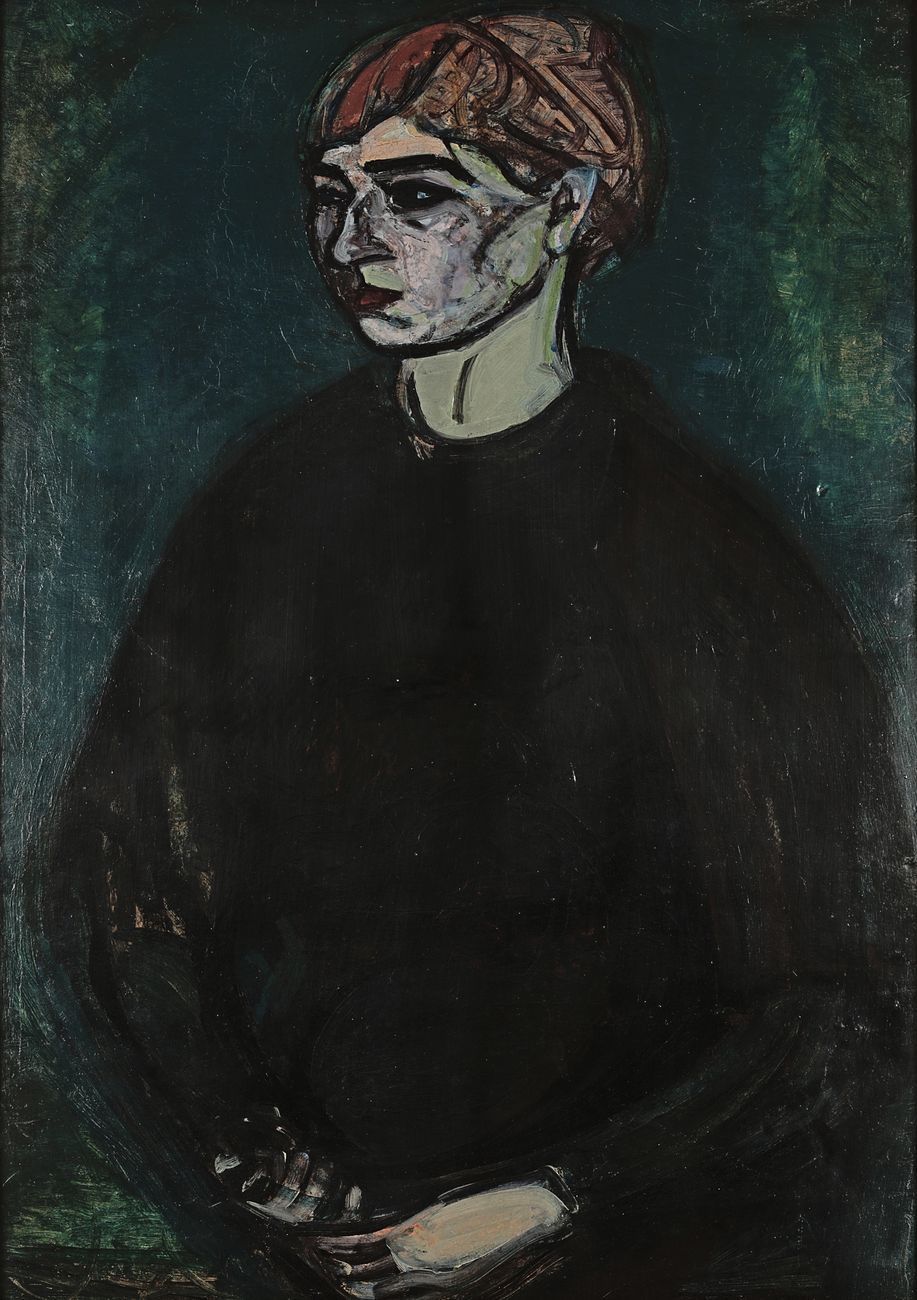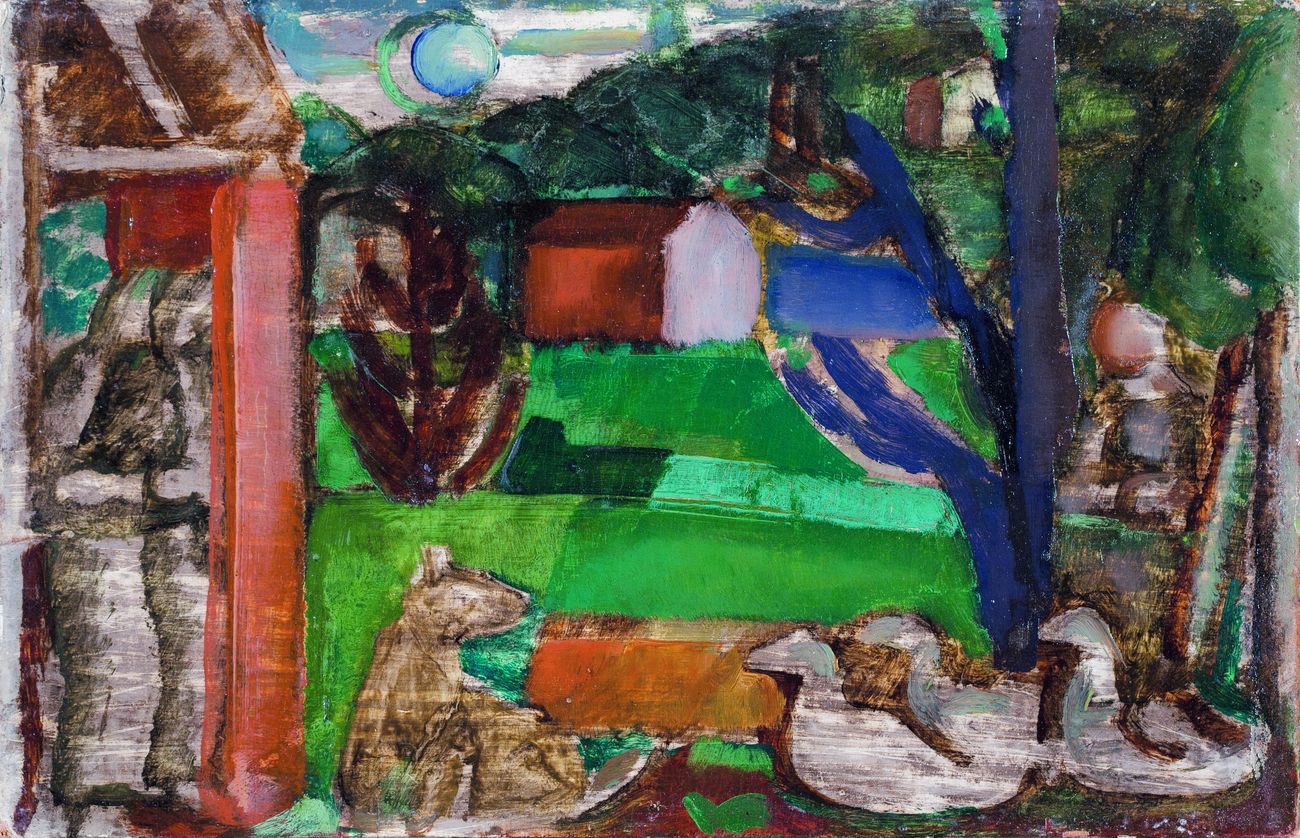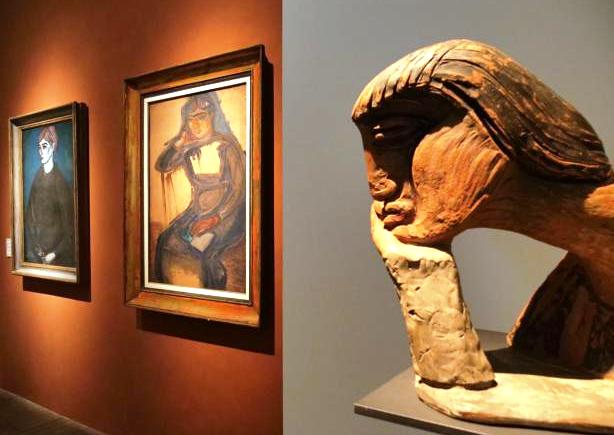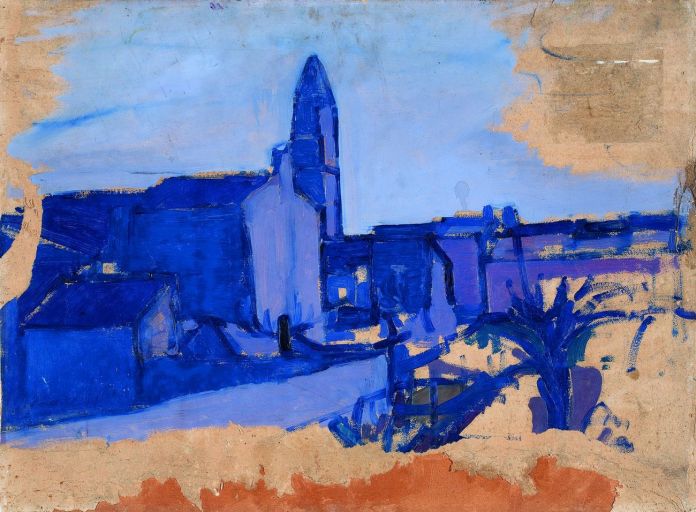Gino Rossi (Venice 06/06/1884 - Treviso 16/12/1947). His greatness is in the extraordinary contribution to the renewal of the art in Italy during the years of 1910 and the beginning of 1920. Burano, the years between 1910 and 1912, was the happy age lived by Gino Rossi.
Barbantini wrote: "the glories of Ca 'Pesaro began in 1910 when we was reached by two paintings. Il muto and la fanciulla del fiore, which, to me and to few friends with open eyes, appeared beautiful and we rose to the seven heavens. Indeed, the youth himself had knocked on our door”.
In 1925 Gino Rossi enters an insane asylum and the next twenty years are only a painful result of evil. However the period of Cà Pesaro, which belonged Gino Rossi, is recognized as the first major episode, previous history even to Futurism, of the Modern Art in Italy.
In 1907 with his friend the sculptor Arturo Martini went to Paris, where he was attracted by the paintings of Gauguin (in addition to the Van Gogh and the Fauves). Following in the footsteps of the painter of Tahiti, then went to Brittany, which was for him a great discovery.
It came back with some works including the famous painting of the flower girl. Then participated in exhibitions of Ca 'Pesaro, which held at that time in Venice a stimulating role for the renewal of Italian culture in opposition to official exhibitions of the Biennale in Venice.
Even with Martini returned to Paris in 1912 where they set together at the Salon de l'Automne alongside Modigliani. His first period, from 1908 to 1914, is underlined by a series of works performed in living rooms in Burano (for Venetian painters he and others formed a sort of Britain) and Asolo.
Breton landscapes, views and descriptions of Burano Asolo reveal different influences, from Gauguin to certain synthetic nouveau stylization. But these works made of other exciting color if it contrasts in which the artist declares a formal search for rigorous constructive engagement. These include maternity 1913, The Lady in schoolgirl and Green 1914.
Called up and sent to the front, suffered the tragedy of war to the end, the story of imprisonment and special family crises hopelessly shook his sanity. The return home and opened new contacts with art in new directions and new visions Rossi, who brought his painting to Cubism, going back to the origins of the lucid lesson of Cézanne.
From 1918 to 1924 his illness intensifies up to take him, in 1925, the asylum Sant'Artemio of Treviso, which will emerge only died in 1947. In these years to do things that put him, as later critics recognize, among the greatest artists of modern Italian art.
On 2018, 23/2 - 20/5, the exhibition at Cà Pesaro, Venice, "Gino Rossi a Venezia. Dialogo tra le collezioni di Fondazione Cariverona e Cà Pesaro".
|

Gino Rossi, Ritratto di signora, 1914. Collezione Fondazione Cariverona. Archivio Fotografico Fondazione Cariverona, photo Saccomani | 
Gino Rossi, Poemetto della sera, 1923. Collezione Fondazione Cariverona. Archivio Fotografico Fondazione Cariverona, photo Saccomani | 
Gino Rossi a Venezia, mostra Cà Pesaro, 2018 | 
Gino Rossi, Burano, 1912-14. Collezione Fondazione Cariverona. Archivio Fotografico Fondazione Cariverona, photo Saccomani |
|


